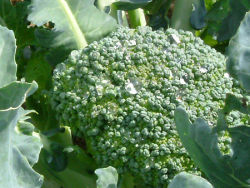 As hot summer days give way to cold winter nights we find our moods beginning to change, our bodies beginning to feel a bit sluggish, our energy level seems to drop, we sometimes want to stay in bed a little longer and we can get a bit tetchy. These changes are collectively referred to as the “winter blues” or to give it its more formal name, Seasonal Affective Disorder (SAD).
As hot summer days give way to cold winter nights we find our moods beginning to change, our bodies beginning to feel a bit sluggish, our energy level seems to drop, we sometimes want to stay in bed a little longer and we can get a bit tetchy. These changes are collectively referred to as the “winter blues” or to give it its more formal name, Seasonal Affective Disorder (SAD).
Seasonal Affective Disorder is really a type of depression with a seasonal pattern and goes by many other names, such as winter depression, summer depression, seasonal depression or even “Stress-Anxiety-Depression”, a new twist on SAD. In reality it has to do with how your body reacts to daylight or in the winter months, lack of daylight. Although SAD is usually more pronounced in the winter months it also manifests itself in the summer time but in a different way. In non- seasonal depression people usually sleep less and eat less but the reverse is true with SAD. They usually sleep more and eat more, a consequence of which is weight gain since most of the food consumed consists of simple carbohydrates which are high in calories.
Most scientists and researchers accept that seasonal mood variations may be related to light and that the further away from the equator you live the greater the risk of SAD. Perhaps the reason for this is that in tropical regions there are not the same seasons as they are in temperate regions. In the tropics there are “rainy” and “dry” seasons but the warmth and light are still there, whereas in temperate regions the four seasons are more defined and pronounced with great variations on the amount of light and heat, summer vs. winter. In effect the body’s master clock (circadian rhythm) is affected by light and darkness. The main hormone that affects your body clock is melatonin, which is only produced in darkness i.e. when you are asleep. Any light in your bedroom disrupts the production of melatonin, which in turn affects your moods. Another hormone which has an effect on your moods is serotonin which gives you the “feel good” factor. All three of these, serotonin, melatonin and your 24 hr. body clock are all affected by light, lack of which is associated with SAD.
Symptoms of SAD……
• Low mood starting in autumn or winter
• Lack of energy (tiredness)
• Irritability
• Overeating and weight gain
• Lack of interest in socialising
• Increased sleep and daytime sleepiness
• Crying spells, body aches, sometimes poor sleep
• Trouble concentrating and thoughts of suicide.
These symptoms can last from autumn of one year to the following spring.
Natural Aids for SAD
Vitamin D
Also known as the sunshine vitamin and dependent on adequate amounts of warm sunlight for its synthesis vitamin D is of paramount importance not only for overall good health but in inducing a feeling of wellbeing. In fact, research has shown that SAD is prevalent when vitamin D levels are low. Remember however, that there are different types of vitamin D and the most natural one is D3.
Light Boxes
Phototherapy (light therapy), in the form of light boxes is one way to tackle winter blues. These are special gadgets that give off extra bright lights, about 25 times brighter than a normal living room light and only needed for about 30 minutes a day, preferably in the mornings and evenings for best results. Light therapy improves depressive symptoms by changing the chemicals in the brain. In fact what you are trying to do here is to imitate the brightness of sunlight. Apparently fluorescent lights are the best for brightness. Side effects are insomnia, headaches, irritability and eyestrain.
Blue Light Therapy
This relies on the emission of a blue light at a specific wave length known to be most effective at stimulating energy.
Foods
Broccoli, cauliflower, cabbage and most cruciferous vegetables should be eaten, preferably raw or slightly cooked. Eat poultry, eggs, and fish which are all rich in the amino acid tryptophan and vitamin B12, all of which are crucial players in the production of the hormone serotonin, which accounts for the “feel good” aspect of your moods. Bananas and cocoa also boost the levels of serotonin. Eating complex carbohydrates also increase the synthesis of serotonin. High protein foods have the opposite effect, so in addition to the green vegetables mentioned above you should eat more sweet potatoes, green bananas, chickpeas, plantain and nature’s carbohydrates and reduce your intake of meats and other high protein foods. Low levels of omega 3 fatty acids are also associated with depression and pessimism, so increase your intake of fish oil or, if you are a vegan or vegetarian, hemp oil.
.
Exercise & Socialise
These two are also crucial in keeping the winter blues at bay. Exercise stimulates the whole body and as we know that the physical, mental and emotional aspects of our being all work synergistically, what benefits one benefits the other. Consequently, if we feel good physically, especially after a good workout or stimulating walk this carries over to our emotions, spirit etc. You can be a gym rat if you want to but even being a gy m mouse (I am speaking about myself here) has its benefits.
m mouse (I am speaking about myself here) has its benefits.
Meeting with people, either formally or informally goes a long way to enhancing our moods and reducing the feeling of loneliness which is associated with SAD. Human beings are gregarious and loneliness (isolation) goes against our natural behaviour. Think for a moment of a prisoner who commits another offence when imprisoned. What punishment is usually meted out? Solitary confinement. The removal from others with whom he/she can communicate. So staying in touch with friends, family, club groups etc is important in the reduction of SAD.
Bipolar Disorder
Do not confuse SAD with bipolar disorder as the latter is really a mental illness which is sometimes classified as a mood disorder. Bipolar disorder relates to manic mood swings from one end of the spectrum to the other, from deep depression to euphoria and normally without reason. Genetics and environmental factors seem to be the main contributors to bipolar disorder which seems to become less prevalent with age. Apparently about 20% of those who suffer from bipolar disorder can track their moods by simply using a calendar.
Finally, if you can afford it do what the birds do and fly south for the winter. This is probably the most effective cure for SAD.
